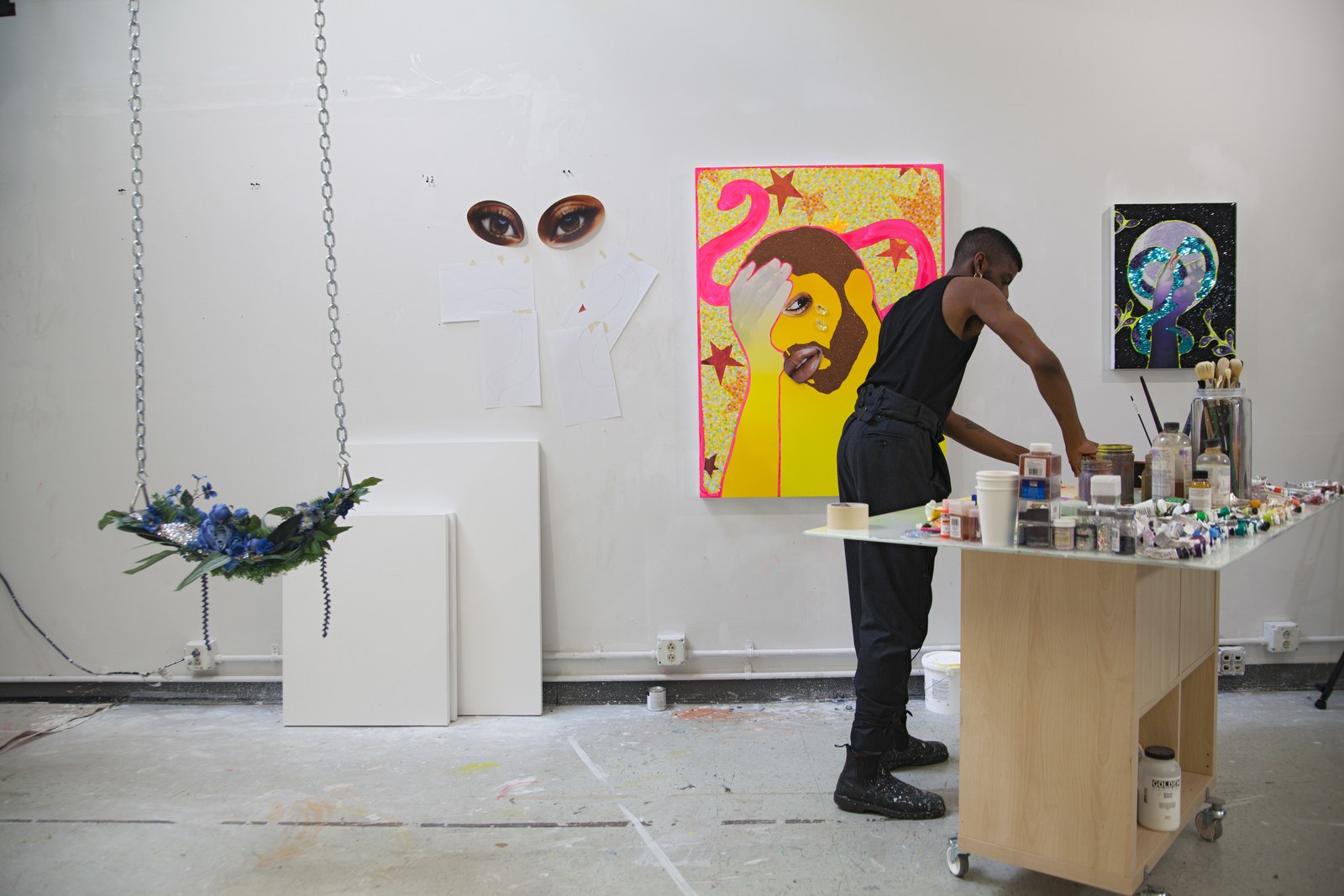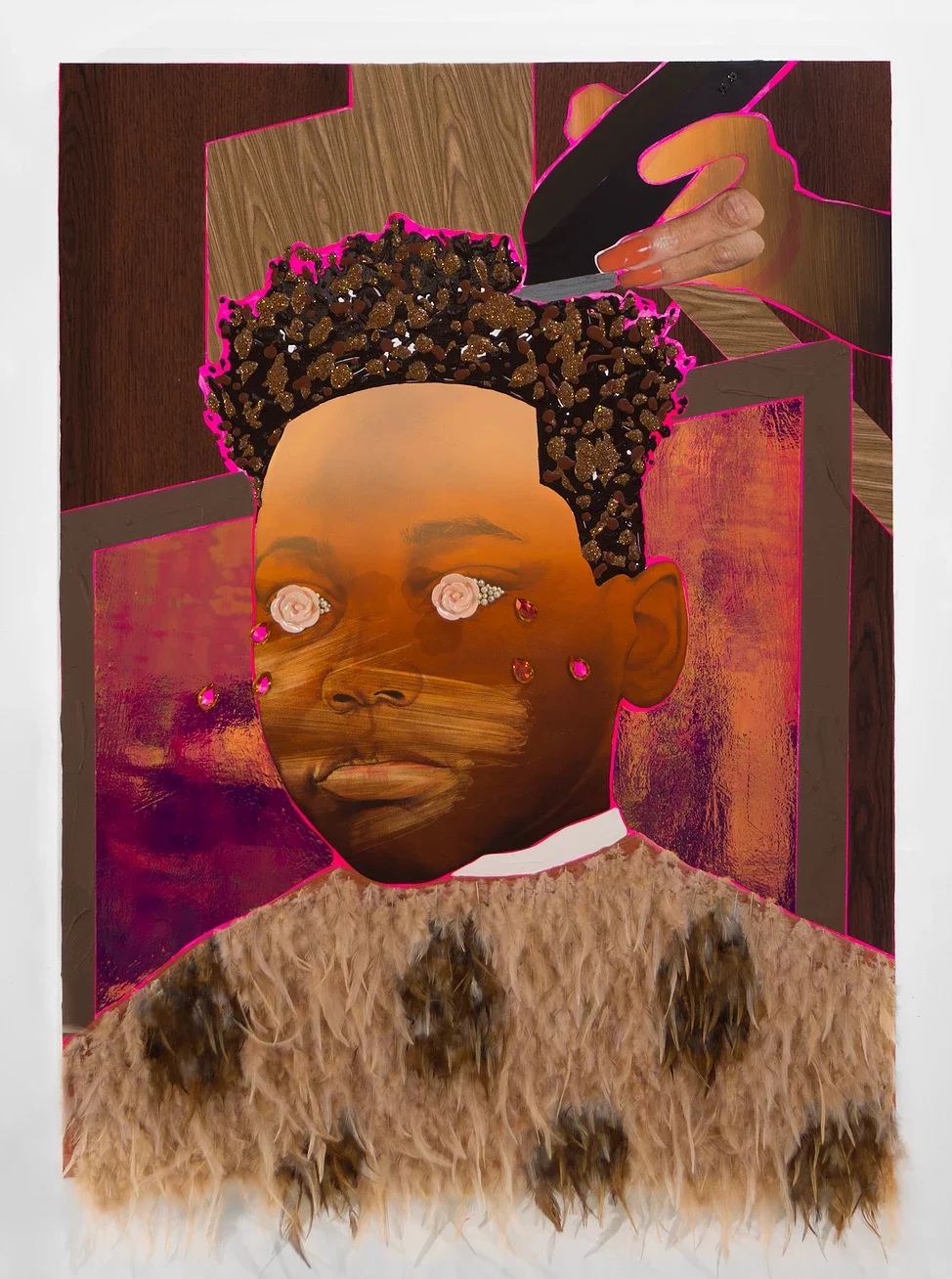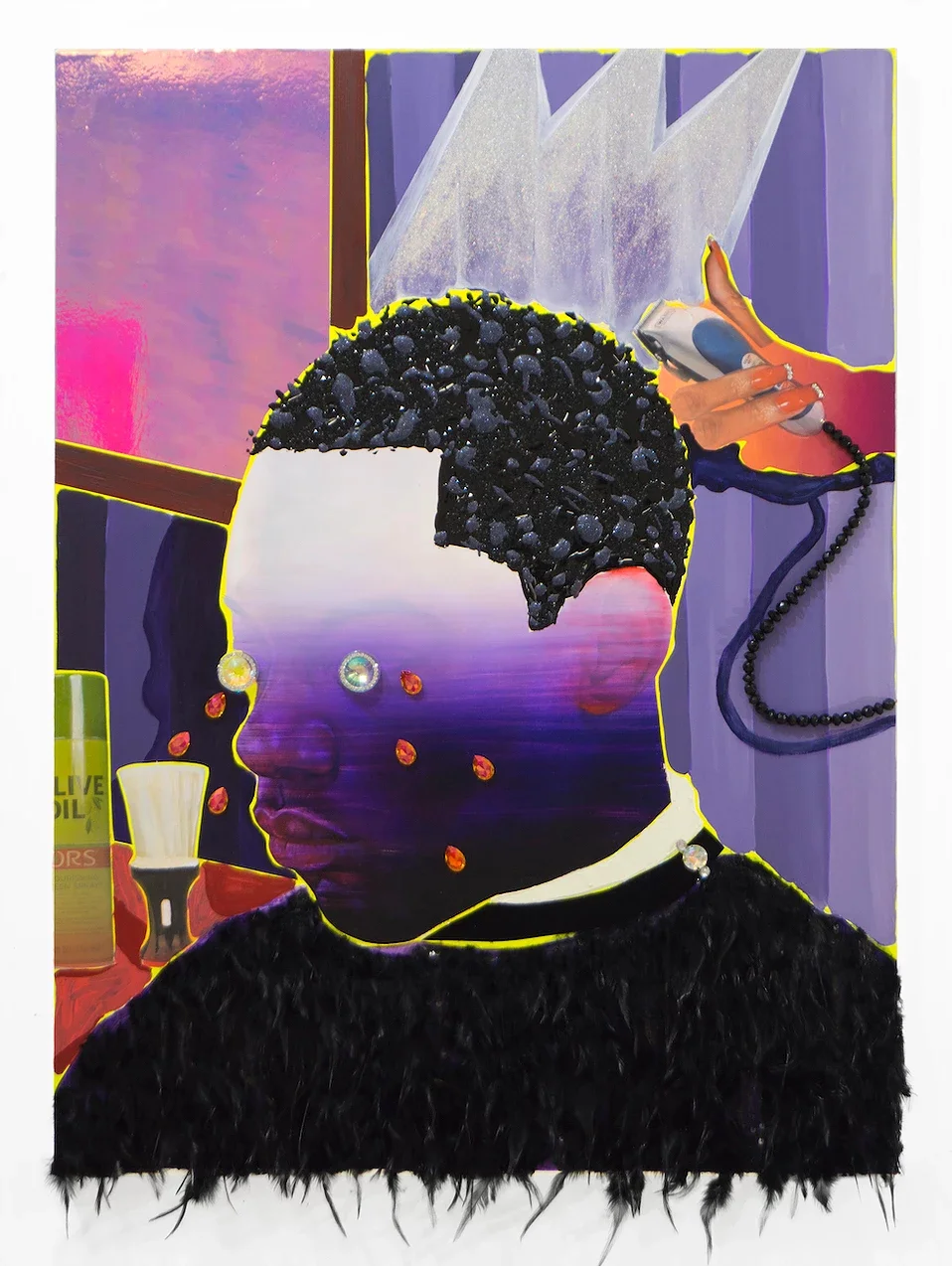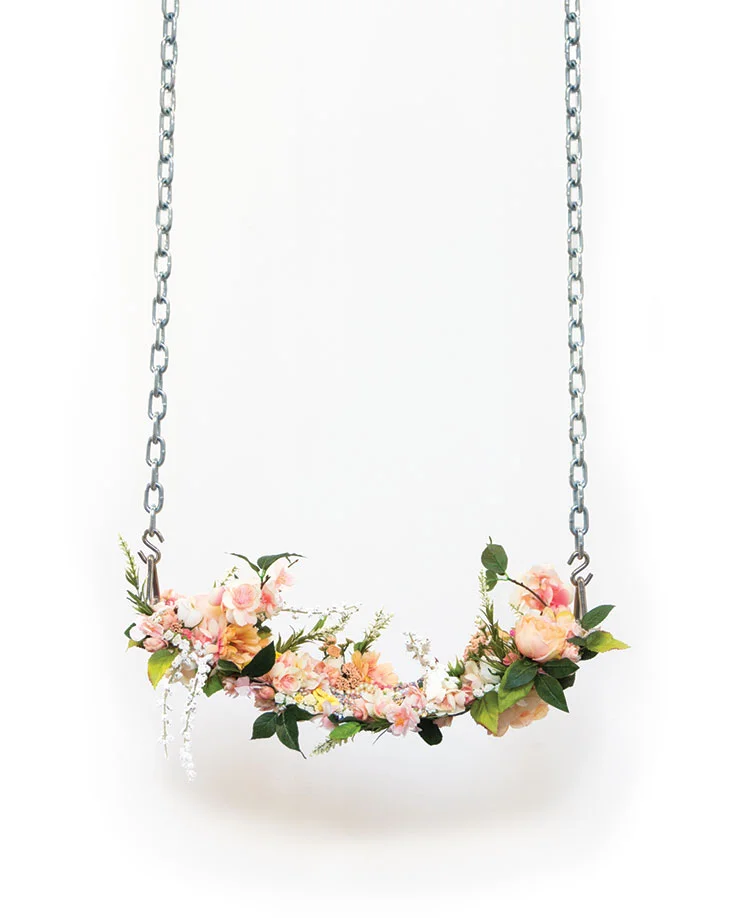Artist Devan Shimoyama is Redefining Masculinity

Mixed-media artist Devan Shimoyama is working in the intersection of queerness and blackness to redefine masculinity.
Cover photo: Devan Shimoyama (circa 2017). By unidentified photographer. Via Gallery Gurls.
This article is part of my 30 Living Queer Artists Worth Celebrating in 2019 series. June is Pride Month, commemorating the international gay rights movement that began June 28th, 1969, with the Stonewall riots of New York. 2019 marks the 50th anniversary of the event. I’m celebrating all month long!
WARNING: he following article features and/or discusses homophobia, murder, and police brutality.
Devan Shimoyama
Philadelphia-born Trinidadian-Japanese artist Devan Shimoyama is challenging preconceived notions of sexuality, race, and masculinity. His tactile artworks are lush, surreal, and beautiful. In Shimoyama’s own words, “I’d say that I make mythological, epic fantasy-figure paintings with drag-queen materials.” The majority of Shimoyama’s oeuvre is in the intersection of queerness and blackness, investigating what it means to be a man in the black community.
The Black Ecstatic
Shimoyama works in mixed-media, combining so called “drag materials” with traditional mediums. In fact, he buys his rhinestones and glitter at the same shops as the queer performers.
“I want my work to be dazzling. I want it to change when you walk across it and be alive,” Shimoyama proclaims. He calls this flamboyancy “the black ecstatic.”
Barbershop
Shimoyama is best known for his Barbershop series, works portraying black boys and men in the midst of grooming. In African American society, the barbershop is a considered a safe gathering place for black men. Unfortunately, this communion is not always inclusive.
Fathers are often concerned about letting themselves or their sons display signs of queerness or femminity, as both are characteristics associated with weakness. Shimoyama’s portraits are celebrations of vulnerability, depicting softboys and crying men. Emotion is not vilified or hidden. Their tears shine like crystals. Sadness creates resilience.
Shimoyama’s work is having important effects. Shimoyama notes how, at a talk at Virginia Commonwealth University, he was approached by a young, cis, straight, Black man who explained how Shimoyama had changed his view. “He hadn’t even considered that the tiny minute things that happen in [barbershops] sort of cultivate a negative environment for some people,” Shimoyama recalls.
Hypermasculinity
Preconceived notions of masculinity have the potential to become fatal. Shimoyama has created sculptures, dedicated to real people, who were victims of prejudice and police brutality. The objects serve as memorials, covered in flowers, in a rejection of the racist hypermasculinity projected onto black youth.
Tamir Rice was just 12-years-old when he was shot on a playground. A bystander had called 911 to report a man with a gun. “He was murdered by police on a swing set. That really haunted me that that happened,” recalls Shimoyama.
A hoodie is dedicated to Trayvon Martin, a high school student who was shot and killed by police officer George Zimmerman who called Trayvon a “real suspicious guy.”
“I keep returning to those two and thinking about them as children and the perception of them as men,” Shimoyama explains. “I don’t want people to forget that that happened. These works are anchors to reality without shoving in your face another triggering presentation of black bodies in pain.”
Black Futurity
Shimoyama’s latest works are oriented towards black futurity. Every new painting is paired with literary choices. In Midnight Rumination, a purple figure sits on a bed with two books, Chris Ofili: Night and Day (a survey of the painter’s major artworks) and Soul of a Nation: Art in the Age of Black Power (a comprehensive record of the art during and immediately following the African American struggle for civil rights). The work dares the viewer to consider what a black aesthetic entails and who is allowed to create it.
Shimoyama continues to create beautiful work that investigates blackness and queerness in America. I’m very eager to see what he will create next. To keep up with his artwork, follow Shimoyama on Instagram.














